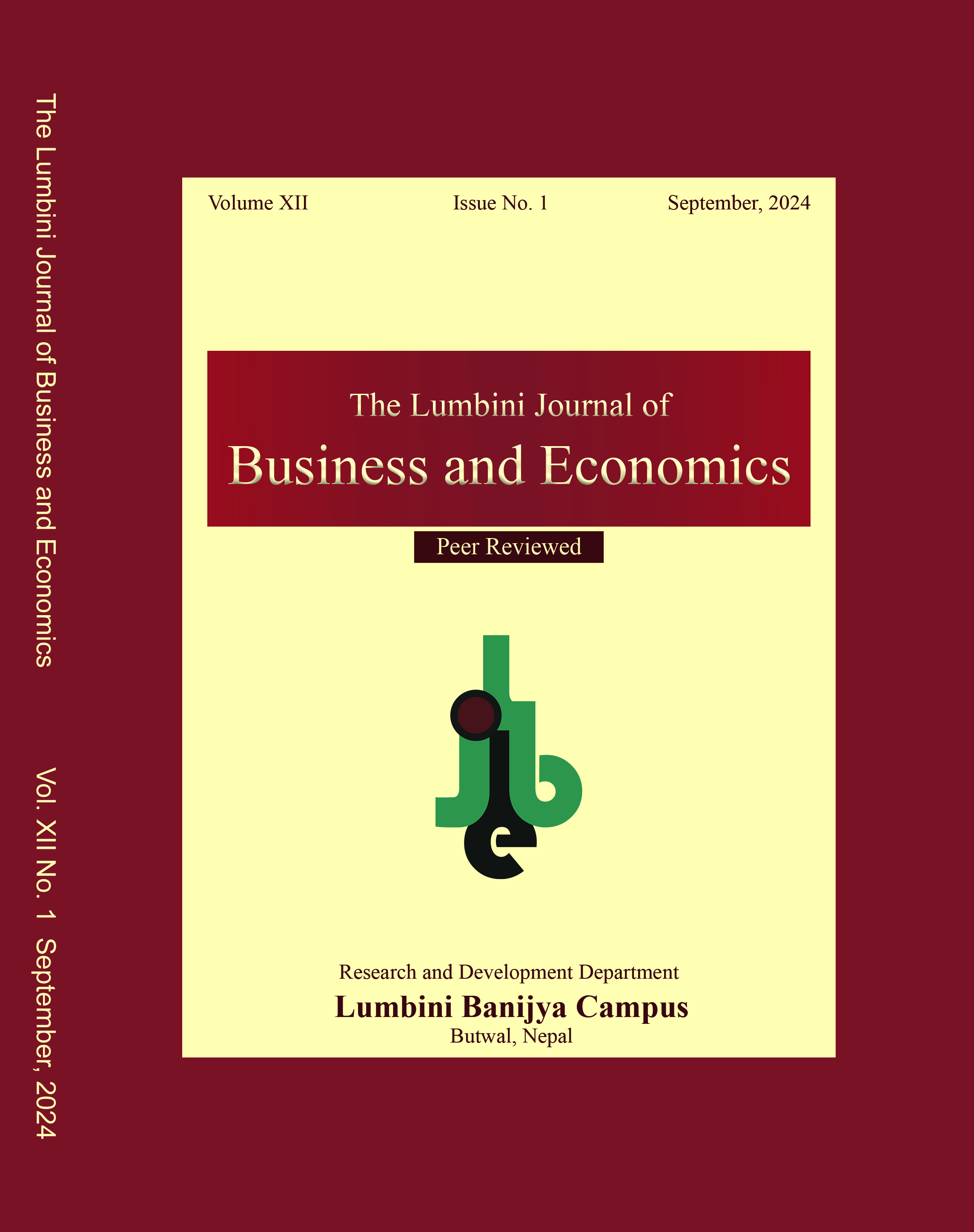Impact of Workforce Diversity on Organizational Effectiveness: Evidence from Nepalese Commercial Banks
DOI:
https://doi.org/10.3126/ljbe.v12i1.70321Keywords:
Workforce diversity, organizational effectiveness, commercial banks, causal-comparative, Smart PLS 4Abstract
Purpose: The primary purpose of this study is to examine the relationship between workforce diversity and overall effectiveness of Nepalese commercial banks, focusing on how diverse employee backgrounds contribute to organizational performance and operational success.
Method: The descriptive and casual comparative research designs were used. The data were collected from 210 managerial level employeesof Nepalese commercial banks through structured questionnaires. The study applied purposive sampling technique to collect the data. Both descriptive and inferential statistical tools were used for data analysis. Data analysis was performed using Smart PLS 4.
Results: The study reveals that ethnic diversity does not significantly influence organizational effectiveness. Conversely, gender and age diversity are significant predictors of organizational effectiveness. These results underscore the relevance of gender and age diversity in enhancing organizational performance in the Nepalese commercial banks.
Conclusion: The research highlights the importance of fostering gender-balanced and age-diverse workforces for improving organizational effectiveness. By focusing on gender and age diversity, banks can better harness diverse perspectives and experiences, leading to improved outcomes. These findings suggest that workforce diversity is a major organizational strategy to enhance organizational effectiveness by fostering innovation, improving decision-making, increasing employee satisfaction, and enhancing customer services.




